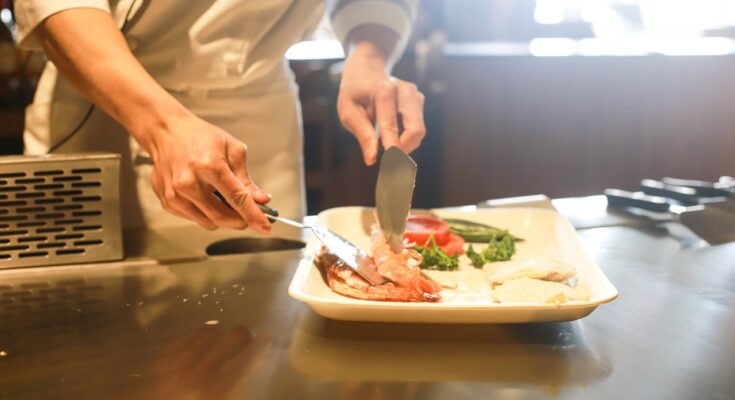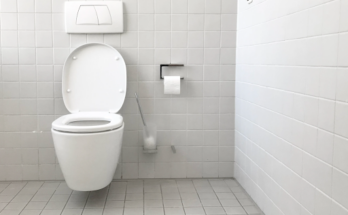Keeping a restaurant clean and safe for customers and staff alike takes hard work and planning. Putting procedures and tools in place to prevent issues before they happen means restaurants can create an environment where diners feel comfortable, and employees can work securely.
Effective Handwashing
Handwashing is one of the easiest and most vital ways that restaurant staff can prevent the spread of illness and disease. Simply rinsing hands in water is not enough; employees need to use soap and wash for at least 20 seconds before rinsing thoroughly. Handwashing should occur:
- before handling any food or drink.
- after using the toilet.
- after handling raw meat, fish, eggs or vegetables.
- after emptying bins or touching waste.
- after blowing noses, coughing, or sneezing.
- after eating or drinking.
- after handling phones or money.
Providing proper handwashing facilities, including hot running water, liquid soap, and disposable paper towels, is essential. Hand dryers or reusable towels can actually spread germs more easily. Posting visual reminders can nudge staff to wash hands more consistently. Managers should build time for frequent handwashing into staff schedules, and monitor compliance. Finally, the handwashing area should be kept clean and free of obstructions.
Sanitising Surfaces
Bacteria and viruses can survive on hard surfaces like counters, tables, utensils, and kitchen equipment for hours or even days. Frequently wiping these surfaces down with an approved sanitising solution can kill pathogens and prevent cross-contamination. Restaurants should invest in food-safe sanitisers and disposable anti-microbial wipes and develop cleaning routines that ensure all front and back-of-house surfaces are regularly disinfected.
Avoiding Cross-Contamination
Besides sanitising surfaces, restaurants need procedures to avoid cross-contamination between raw and cooked foods. This includes designating separate preparation areas and tools for handling meat versus vegetables. Sinks used for washing produce should be thoroughly cleaned and sanitised before washing meat in them. Food must also be properly stored at safe temperatures and rotated using FIFO (first-in, first-out) principles to prevent spoiling. Colour-coded cutting boards can help staff distinguish which boards they should use for meat products versus other foods.
Managing Spills Properly
Despite the most diligent prevention efforts, spills are an inevitable occurrence in restaurant environments. Dealing with spills quickly and safely is key to preventing slips or the growth of bacteria. Staff should immediately use absorbent paper towels and fast-acting spill kits containing solutions tailored to pick up grease, liquids, and food debris safely. To learn more about fast-acting spill kits, read more here on Seton.
Maintaining Proper Ventilation
Proper ventilation keeps the air circulating so that smells and condensation do not build up. Stagnant air can create an unpleasant dining environment. Local council regulations typically mandate that commercial kitchen exhaust hoods filter out grease and smoke while expelling air at a mandated rate matched to the size of appliances below. Filters should be cleaned regularly as clogged systems present fire risks.
Avoiding Pest Infestations
While not a pleasant topic, controlling pest infestations is a non-negotiable aspect of running a hygienic eatery. Carefully sealing off any cracks and crevices prevents rodents and insects from getting inside where they can contaminate surfaces and food storage areas. Doors and windows should close snugly and holes in exterior walls must be sealed as soon as they are discovered.
Rubbish should be stored away from the main building in bins that have tightly closed lids, before removal by waste management services multiple times per week. This is to discourage scavenging pests. Traps can provide early warning against infestations while poisons, gels, and powders help eliminate invaders that get inside; however, calling in professional pest control immediately at the first signs of activity may be required for full eradication. Managers should track and record all pest sightings and any treatments performed.
Training Employees
None of these safety and hygiene measures will succeed without proper employee training. Staff must understand why following policies and procedures consistently is so vital for health, safety, and the restaurant’s reputation. Training should cover handwashing, surface cleaning, reporting illnesses, dealing with injuries, safely preparing various foods, storing raw and cooked items separately, monitoring fridge/freezer temperatures, what to do in case of fire, and more.
Refreshing training periodically helps keep best practices top of mind. Posting visual reminders around workstations acts as an easy prompt. New hires need comprehensive onboarding, while experienced employees benefit from refreshers linking policies to real-world consequences. Peer audits and observations allow co-workers learn from each other.
Following Local Health Regulations
Restaurants must comply with all relevant local authority and UK Food Standards Agency safety and food hygiene regulations. This includes undergoing inspections, meeting food storage/handling guidelines, and satisfying reporting and record-keeping rules. Staying up to date on new and changing regulations is essential for maintaining both compliance and public trust. Outlets should be prepared to supply policies, temperature logs, cleaning records, staff certifications, or other materials during audits. Internal audits help identify and resolve gaps ahead of official examinations.
Posting sign-off sheets and monitoring policy confirmations helps reinforce staff understanding of current codes. Registering for email updates from oversight agencies provides advance notice of shifting expectations. Seeking local health department advice around major changes like new equipment installation prevents potential compliance pitfalls. When unsure about a given issue, operators should reach out to authorities in advance rather than making assumptions. Such diligence ensures that if any incidents do happen, the restaurant is well prepared to respond appropriately.
Keeping dining establishments clean and safe requires vigilant attention to hygiene and safety across both customer-facing and behind-the-scenes operations. Supplying the right tools, implementing the proper procedures, and providing adequate staff training means restaurants can create welcoming yet low-risk spaces for guests to enjoy while protecting employees as well. A proactive approach and commitment to following health regulations allows restaurants to continue serving delicious fare to the local community.
Consistently emphasising safety pays off through the comfort and confidence of all who dine or work there. When restaurants embed cleanliness into their culture, they stand out positively to patrons. Both visitors and regulars appreciate such visible care for their wellbeing. For staff, good safety practices build pride and teamwork. A multi-pronged hygiene strategy conveys respect for everyone inside an eatery’s four walls and reassures those peering inside its windows that this is a dining establishment they can trust.




